Why the travel snobs are wrong about Tenerife
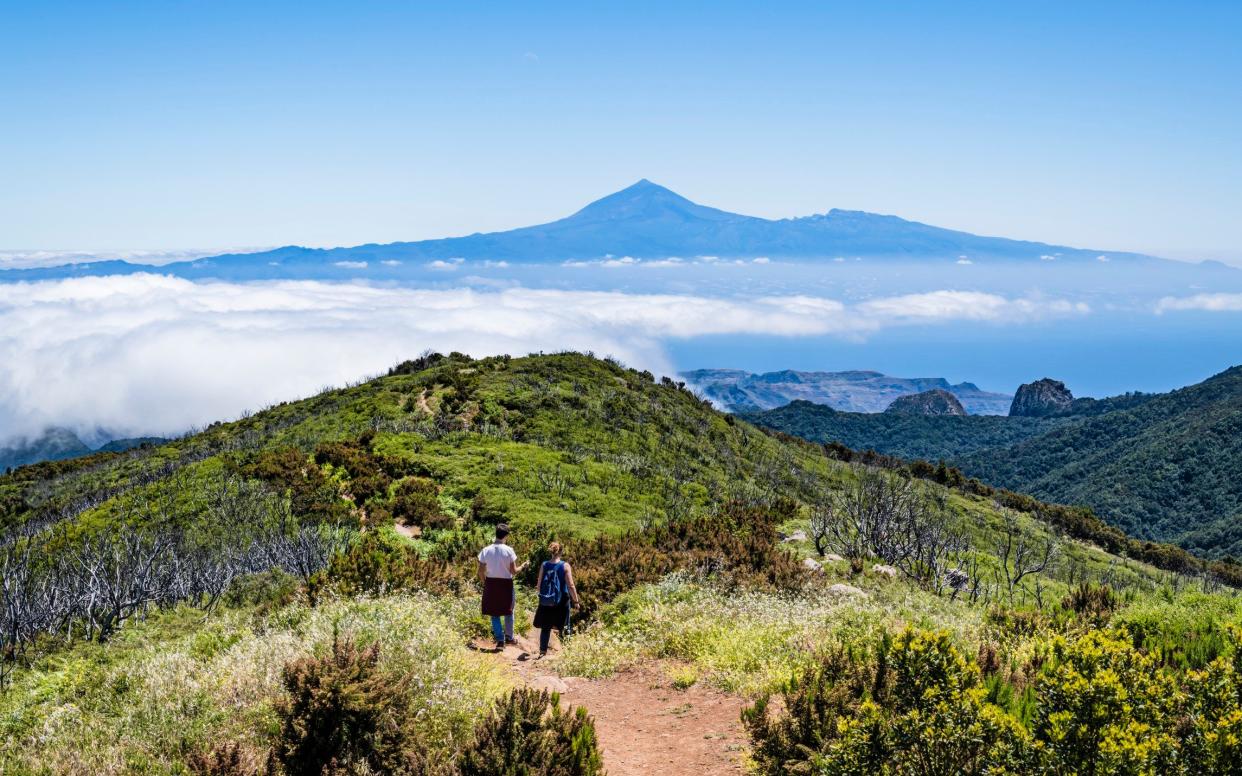
Tenerife. Vast concrete resorts, imported sand and lobster-red Brits chowing down on a full English breakfast? If that’s what automatically springs to mind, it’s time to lay aside your preconceptions and look a little closer. Do that and you will discover an island that is almost half national park or nature reserve; an outcrop ringed with teeny coves of sand smoothed by the Atlantic and untroubled by a single footprint – until yours sinks into it, that is. Here, amid the crashing ocean, the planet’s third tallest volcano broods beneath a blue sky, and even this early in the year the temperature is topping 20 degrees.
Covid-wise, Tenerife is relatively straightforward: everyone over 12 must provide proof of vaccination or recovery (this can be the NHS Covid travel pass, accessed via the NHS app), but then you are in. There are numerous daily direct flights from a range of UK airports, with return fares from the likes of easyJet and Wizz Air available for less than £50. A huge number of package options are also available, from the likes of British Airways (ba.com), Tui (tui.co.uk), Jet2Holidays (jet2holidays.com) and On The Beach (onthebeach.co.uk).
But the real question is whether Tenerife is stylish enough. Miguel Gonzalez, vibe manager at Hard Rock Hotel Tenerife, certainly thinks so. He believes his hotel has plenty to offer the “young, trendy couples that visit”. Hard Rock’s guests are “well-travelled and with high expectations”, he tells me, and they want “a location that can offer variety”.
With its dramatic volcanic landscape, abundant wildlife and some of the best restaurants in Spain, Tenerife delivers. And people are starting to cotton on. The Padrón brothers, Juan Carlos and Jonathan, who head up El Rincón de Juan Carlos. one of the island’s Michelin-starred restaurants, welcome the most sophisticated of clientele: “We are a gastronomic restaurant, and that means almost everybody who comes here is ready to enjoy a very special dinner. They are usually high-end guests with a deep culinary knowledge.”
Susan Theunissen, owner and designer of the super-swish 70s Modernist Villa, agrees: “Our guests are mostly creative people, a lot are stylists, models, photographers and so on.” Even package holidays are heading upmarket, as Erin Johnson, of luxury holiday specialist Sovereign, tells me: “We’ve seen an increase in bookings for couples and families looking to explore Tenerife’s luxury side.”
If, like them, you are seeking the unexpected, here are 10 reasons to go.
You can stand at Spain’s highest point…
The loftiest peak in Spain isn’t found on the mainland but at the heart of Tenerife, an active volcano swirling in sulphur and still warm to the touch. The summit of Pico de Teide is 12,198ft above sea level – making it the world’s third tallest – and you will feel the temperature drop as you ascend through the jet-black badlands and twisted lavascapes of the national park surrounding the peak itself. You will need a permit for the very top (free, book well in advance at reservasparquesnacionales.es), but you can reach La Rambleta at 11,663ft without one.
If you don’t fancy the five-hour walk up from Montaña Blanca, book the cable car (from £30 return, £17 one way, volcanoteide.com). Try to time your visit for sunset, when the sky washes pink and Teide casts a perfect pyramid-shaped shadow across the island.

… then tunnel along a lava tube
Everyone ticks off Teide, but more discerning volcano enthusiasts will want to walk their own path, one that leads beneath the island’s verdant vegetation and plunges into the longest lava tube outside Hawaii. The Cueva del Viento is a labyrinth of gnarled and knobbled tunnels, black with basaltic lava and dripping with cool, clear water. On your two-hour guided tour (£17, cuevadelviento.net) you will don a head torch and pick your way along the dark, rough tunnel, perhaps making out tree roots groping the thin air and spotting some of the 15 new-to-science lifeforms so far discovered in this subterranean wonderland.
The wildlife is unique – and ubiquitous
Thanks to its fertile soil, numerous micro-climates and year-round sunshine, Tenerife enjoys an ecological diversity that is second to none. The island is home to 140 endemic plant species, including the broccoli floret-shaped dragon tree and some of the biggest and boldest ferns you will ever see, plus flocks of colourful birds and many different species of cetacean.
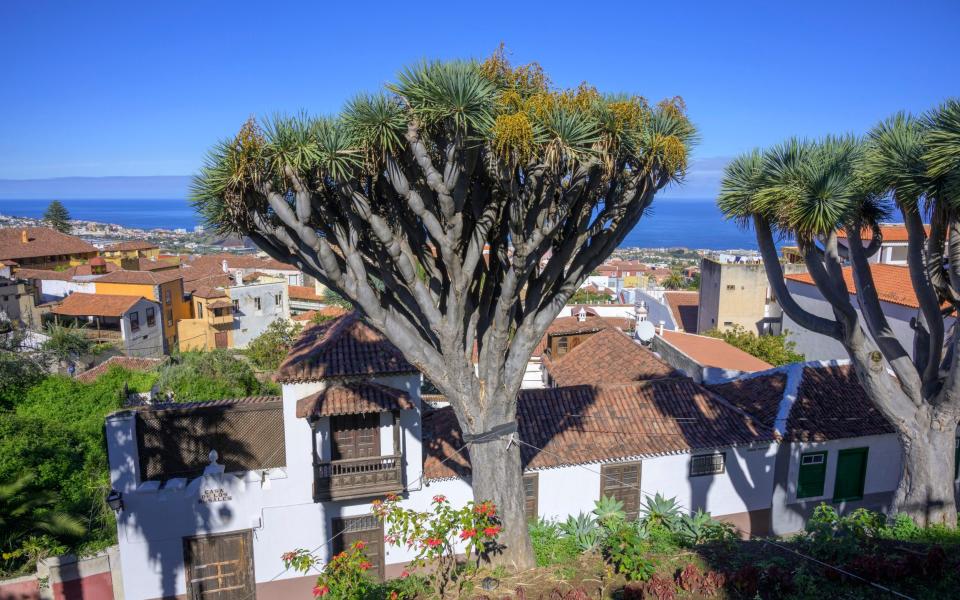
Take a bird-spotting walk through the dense laurel forests of Anaga, all twisted, moss-covered branches and water trickling through the lichen, or hike down through Masca Gorge to see lizards and geckos darting across the sun-baked rocks.
Whale-watching trips head out from Puerto Colón marina and operators are so confident of spotting the pilot whale and bottlenose dolphin populations that they offer a guarantee (£40, whalewatchtenerife.org).

You’ll be charmed by postcard-perfect towns
Candy-coloured mansions, Disney-esque bell towers and balconies fit for Juliet line the streets of some of Tenerife’s most beautiful towns. La Laguna is the top pick; its historic mansions and cobbled streets are so unspoilt, it was added to the Unesco World Heritage list in 1999. If you have been to South America you might feel that continent’s unmistakable beat here – but remember this is the original, not a copy, with merchants and adventurers stopping off here en route to the “new world” and taking the town’s aesthetic with them.
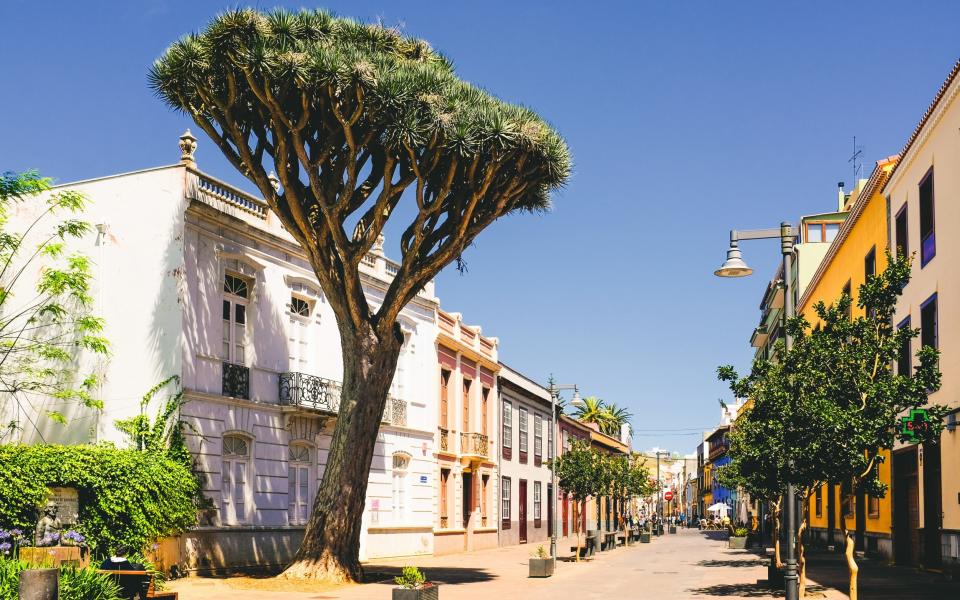
Don’t miss pretty Garachico either, an ancient village that was forever changed by a volcanic eruption in 1706. It flooded the once-vital harbour with lava, destroying the town’s trading fortunes but setting it up for future tourism by creating some of the island’s best natural swimming pools.
The hotels are chic and cheerful
Tenerife is fun, but that doesn’t make it tacky. Far from it, in fact, with hotels here heading increasingly upmarket by adding gourmet restaurants and sleek spas while maintaining their up-for-a-good-time swagger. Take the Hard Rock Hotel, for example, which combines stylish rooms and concierge service with live poolside gigs and DJ-led vinyasa yoga. This is a luxury hotel for the party crowd (doubles from £190 B&B, hardrockhotels.com).
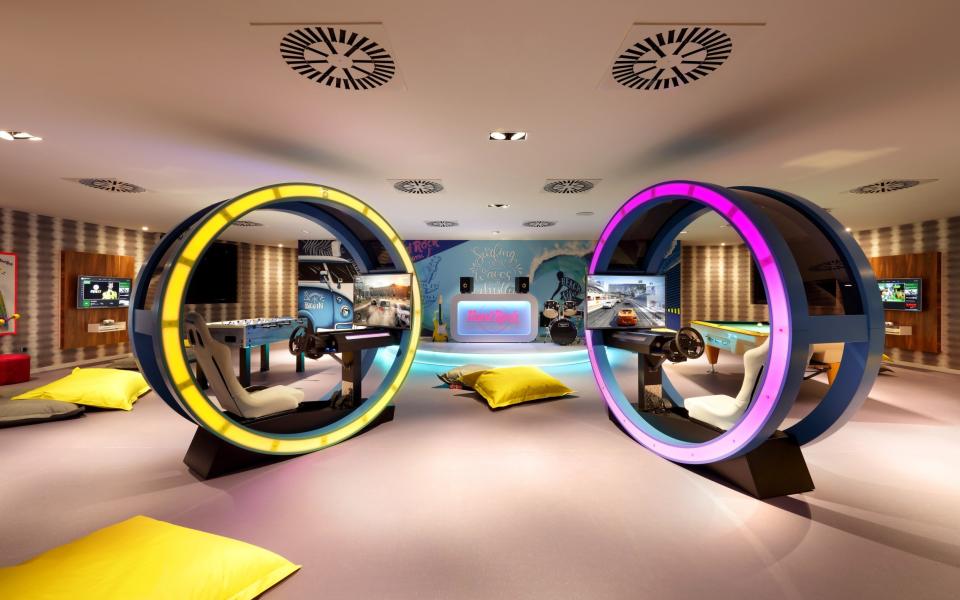
For something quieter, check in at the Ritz-Carlton Abama, a super-chic complex of luxury rooms and vast seaview suites that has two Michelin-starred restaurants (one Basque, one Japanese) and a spa inspired by Roman bathing practices, plus an exclusive area of beach and a clifftop golf course (doubles from £322 B&B, ritzcarlton.com).
Prefer to self-cater? Book the eight-bedroom 70s Modernist Villa in the somnolent village of El Porís and you will be surrounded by water, with the Atlantic right outside and two pools – one circular, one entirely natural – in which to swim. The style is pared back and seriously relaxed; think lounge chairs by the outdoor fireplace and a hammock strung up on the terrace (from £580 per night, sleeps 19, welcomebeyond.com). For more places to stay see our guide to the best hotels in Tenerife.

You can feast in Michelin-starred restaurants
Forget fry-ups and limp buffets. Today Tenerife is gaining a reputation for stellar homegrown produce, boutique wines and superstar chefs. The island is now home to four Michelin-starred restaurants, one of which – Martín Berasategui’s MB at the Abama hotel (ritzcarlton.com) – has held two stars since 2014. This temple to Canarian and Spanish cuisine serves a 10-plate tasting menu that features the likes of El Hierro cheese and Lanzarote sweet potato alongside Iberian pork and Wagyu beef. The hotel is also home to one-star Kabuki, which serves mind-bending sushi and sashimi, while over at the Royal Hideaway Corales Beach (barcelo.com), island-born chefs the Padrón brothers pair seasonal Tenerifian produce such as cherne fish with Canarian wines on their 12-course tasting menu.
The beaches are beautiful
Yes, the sand may be black on many a beach in Tenerife, but who cares when the water shimmers aquamarine, the sun beats down from a cloudless sky and there is barely another bather in sight? With so many beaches – 43 miles of them – there is always somewhere to sink your toes in the sand away from the crowds. Head to sheltered Playa El Bollullo in the Orotava Valley, which can be reached on foot through the banana trees, or unfurl your beach towel at Playa de la Tejita, at the base of sandy Montaña Roja nature reserve.
Can’t bear the black sand? At Playa de las Teresitas, in the island’s north, the sand is Sahara-gold (because it is imported) and curves beneath volcanic cliffs and swaying palms, its waters sheltered by a man-made breakwater.
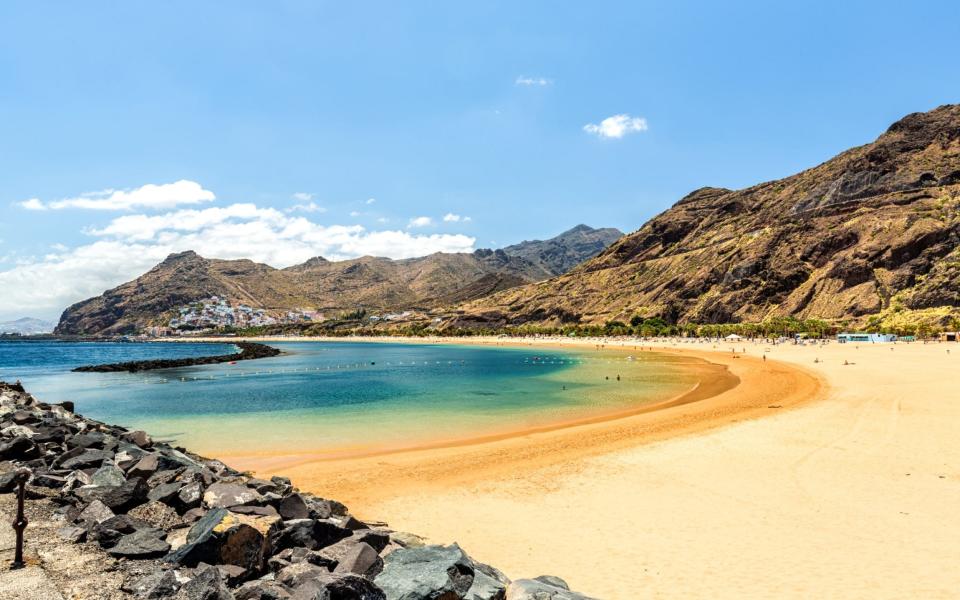
You’ll need your hiking boots
Almost half of Tenerife is protected and the only way to explore properly is on foot. For an easy introduction, park at La Caldera recreation area near Aguamansa and follow the undulating trails between fronds and ferns. Further up, the vegetation all but disappears as the landscape twists into lava formations that make you feel you have landed on the moon.
The trails at Roques de García can be tackled by even the most hesitant of hikers, the well-marked pathways leading you between fingers of rock and past tongues of solidified lava flow. You will spot the bright heads of hardy flowers poking through the earth; lizards bask, then scarper as you approach; and Mount Teide stands sentry above it all.
You’ll see stars
Blue skies by day make for clear skies by night, and Tenerife is one of the world’s stargazing hotspots, its cloudless, dark velvet canopy lit by thousands of stars post-sunset. The island’s pristine national parks are ideal for star-spotting and it’s easy to find a dark spot, look up and start picking out constellations and even planets. Don’t know your Ursa Minor from your rings of Saturn? Take a tour of the night sky at Teide, using long-range telescopes to take a closer look (£30, volcanoteide.com).
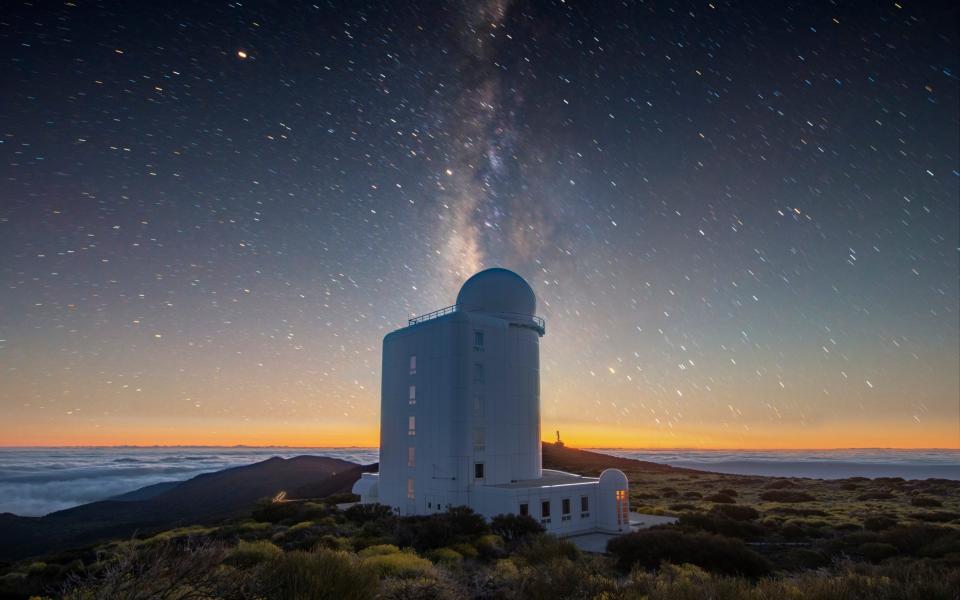
You can dive with manta rays
Slip into warm waters as clear as gin and as packed with marine life as your local aquarium and you will understand why Tenerife’s western coast is strung with dive schools. Don a wetsuit and join your Padi-accredited instructor for a beginner’s scuba session, starting with the basics in a swimming pool and then descending beneath the Atlantic to see if you can spot manta rays, parrotfish and moray eels among the underwater lava formations (£62, paradisedivers.co.uk).
For full details of entry requirements and Covid rules for Spain and its islands, including Tenerife, see telegraph.co.uk/tt-travelrules


